As organizations across the industry adopt cloud-native applications, they face new complexity and observability challenges. The ESG Cloud-native Applications report explores these challenges and how organizations can solve them.
Cloud-native applications now dominate IT as DevOps teams respond to growing demands to deliver functionality faster and more securely. A new ESG report explores these trends to shine a light on how prevalent these challenges are and how organizations are dealing with them.
As DevOps teams are pivoting to cloud-native technologies, IT environments have become increasingly complex. This complexity makes it difficult for teams to monitor services and applications, which often leads to compliance and security concerns. To address these challenges, organizations are adopting cloud-first strategies and cloud-native application development practices. Because cloud-native technologies are flexible and scale automatically, teams can replace manual application monitoring and testing methods to keep pace with innovation. These cloud initiatives also allow DevOps teams to release software more frequently without sacrificing quality.
As part of its Distributed Cloud research series, the Enterprise Strategy Group (ESG) surveyed 387 North American IT professionals responsible for managing application infrastructure. The study seeks to understand how businesses are approaching cloud-native applications and how they are resolving tech stack issues. It also explores what challenges still remain in organizations’ cloud initiatives and insights into developer productivity.
Cloud-native is the preferred way of delivering applications
According to the ESG report on cloud-native applications, many organizations host the majority of their production applications in cloud environments. Many more currently have plans to develop cloud-native applications based on microservices architectures.
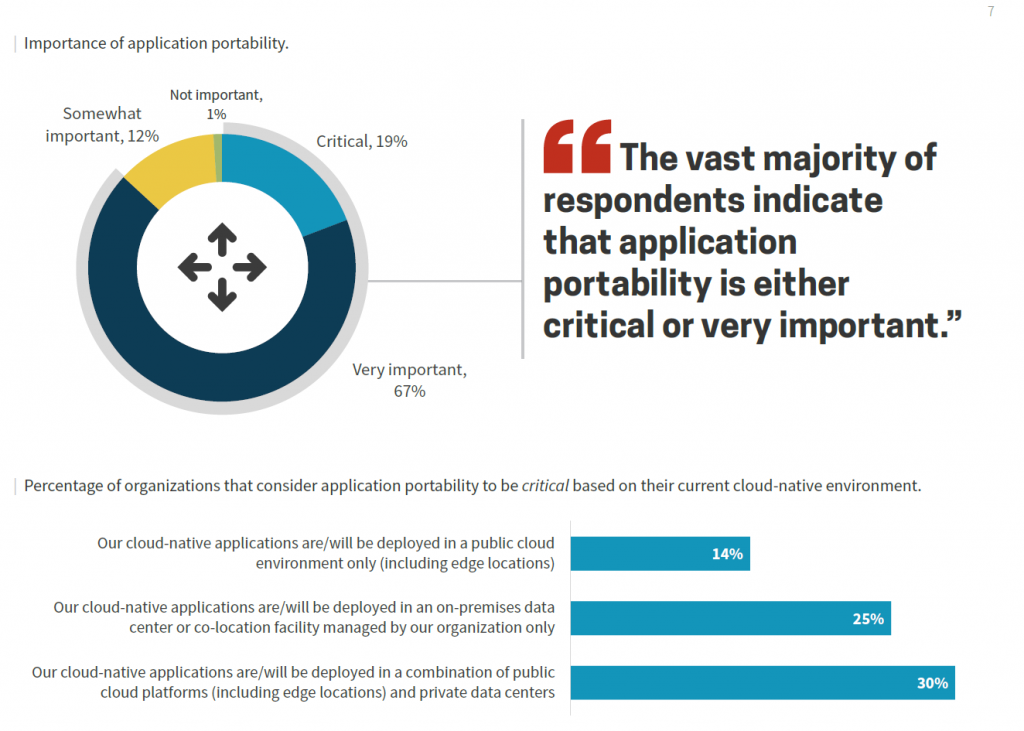
When asked about application portability, 86% of organizations answered that application portability was very important or critical to their goals. Because cloud-native services are so dynamic, hybrid cloud practitioners need workloads to operate seamlessly across clouds and on-premises assets.
Organizations recognize the value of cloud-native application deployment and delivery
IT leaders recognize many challenges with cloud-native applications. Top of the list is application security, maintaining compliance requirements, and lack of monitoring and observability. Technical issues, such as API incompatibilities, lack of fully automated CI/CD pipelines, and managing multiple clouds are also slowing teams down. Organizational issues can be most frustrating. These frustrations include services purchased outside of IT protocols, lack of resources and skills, and silos created by organizational barriers.
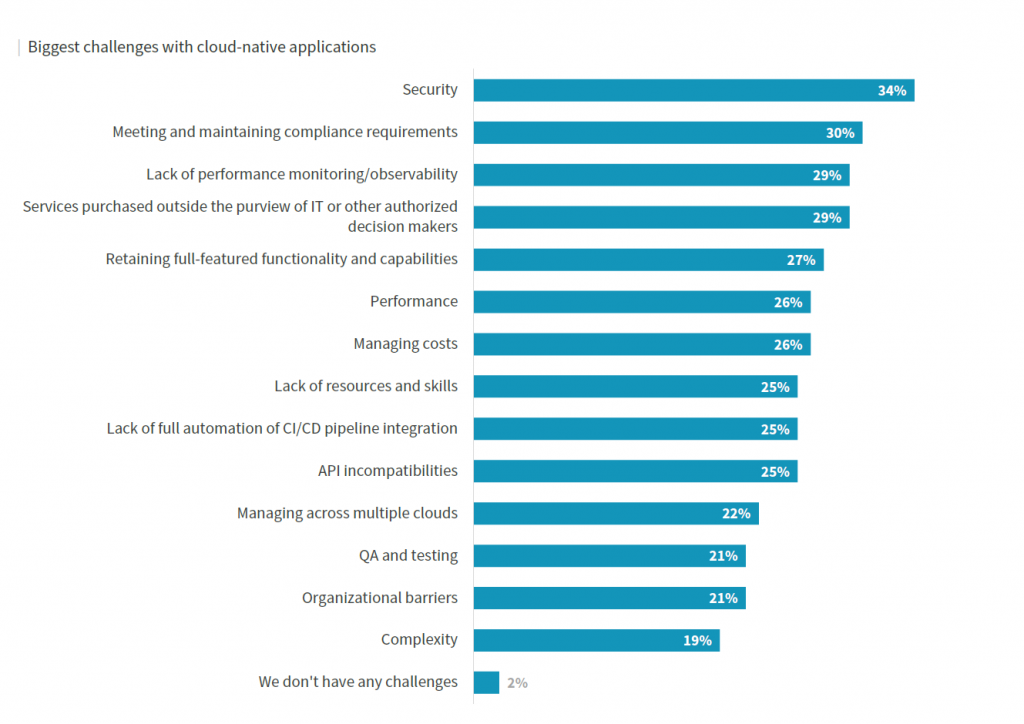
Despite these challenges, organizations are adopting cloud-native applications due to the value they provide to the entire business. The greatest areas of value include deployment efficiency, addressing issues earlier in the development lifecycle, and cross-team collaboration. Although cloud-native technologies present challenges, IT teams recognize the immense value they bring to improving software quality and increasing the speed of development.
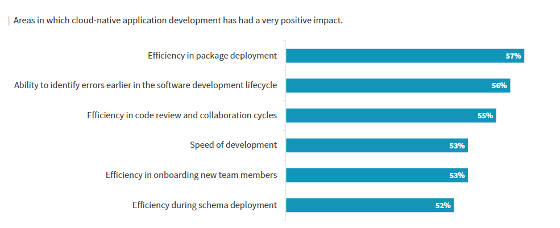
Cloud-first technologies enable more frequent releases and agile software development methodologies
DevOps teams are among those who most experience the benefits of cloud-native applications and cloud-first strategies. Cloud technologies enable teams to deploy and release software more frequently. Accordingly, more than half of respondents report they are now deploying daily, and some even deploying hourly.
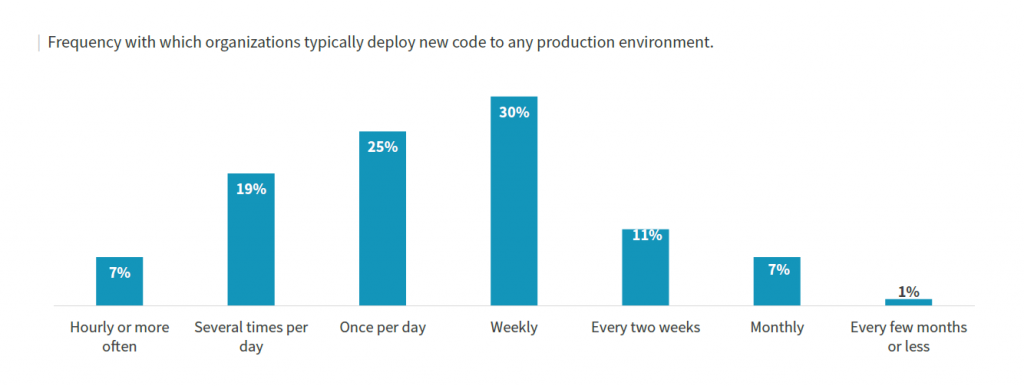
As a result, Agile methodologies are pervasive and visible in every organization, including DevOps and GitOps. This emphasizes the importance of tools and platforms that complement these development approaches.
Improving cross-team collaboration improves cloud-native success
Breaking down silos and improving cross-team collaboration are key for cloud-native success. 57% of organizations will prioritize improving collaboration between DevOps, app developers, and IT operations teams in the next 12 to 18 months. 48% want to look externally and engage with professional services firms to get an outside-in view of how to improve their cloud-native strategy. The ESG report makes it clear that organizations can’t maintain their status quo when looking to expand their cloud-native adoption.
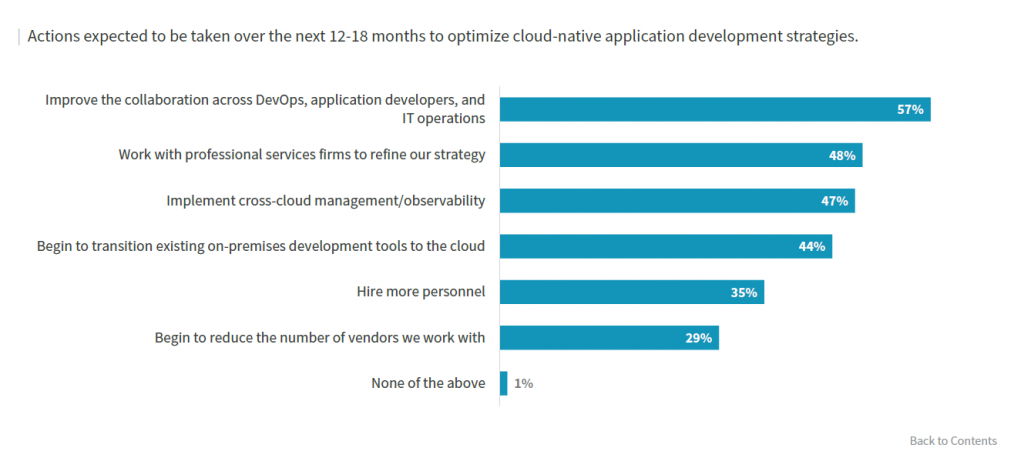
Meet cloud-native challenges head-on with an automated observability platform
Organizations are looking for solutions to the many challenges they face including siloed teams, regulatory compliance, and security vulnerabilities. At Dynatrace, we built a platform that helps address those common pain points and empowers the value that cloud-first technologies can provide.
By proactively monitoring and catching problems earlier in the software pipeline, you can develop, deploy, test, and release software automatically. Using a platform approach, you can automate development to meet compliance requirements throughout the CI/CD pipeline using established service level objectives (SLOs). Dynatrace helps you address application security with built-in vulnerability detection and Davis AI security insights. Using Dynatrace, you can increase the speed of software delivery through automated testing and evaluation of software through root cause analysis and automated quality gates. Automation and software intelligence improves the scalability of frequent release cycles for teams using DevOps and GitOps methodologies.
Dynatrace integrates and supports hundreds of developer tools via one unified control plane so teams can break down silos and can easily share data and deployment metrics. This ensures developers and operations teams can trust their existing tools without having to reconfigure them or learn entirely new ones.
To read the full ESG report, see the ESG Distributed Cloud Series: Cloud-native Applications.





Looking for answers?
Start a new discussion or ask for help in our Q&A forum.
Go to forum